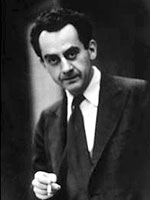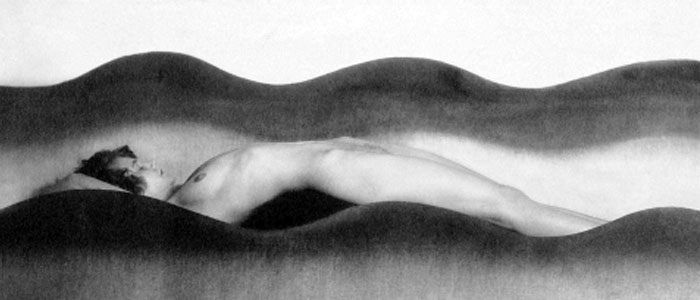Man Ray (1890-1976)

Recently Added
[1929] A voyage through a century of photography - Woman With Long Hair, 1929
[1931] Vintage gelatin silver print - Electricité, 1931
BIOGRAPHY
Man Ray was born Emmanuel Radnitsky (or Radnitzky) in 1890 in Philadelphia, but his family later moved to Brooklyn and shortened their name to Ray.
Not wishing to be pigeonholed by his ethnic background, the young Ray abbreviated Emmanuel (or 'Manny') to Man - which could hardly be more universal. Visits to shows at Stieglitz's 291 Gallery and elsewhere introduced Man Ray to modern art and he attended various classes around New York while making a living as a graphic artist.
In New York, Ray met and worked with the French artist Marcel Duchamp (site in French, with good illustrations) and Francis Picabia from Spain, forming the core of the New York Dada movement whose centre was Alfred Stieglitz's gallery '291'. Ray largely abandoned the use of brushes in his paintings, preferring the machine-like quality of the airbrush, used with cut stencils. He also took up photography, at first to produce prints of his own work.
Among his early photographs are two pictures forming a diptych, Man and Woman, La Femme, an egg whisk with its shadow, and a lamp holder with wooden clothespins on a sheet of glass, again coalescing with its shadow into a greater whole. Together with his cliché verres from the same period (prints made from a negative formed by engraving a line on a blackened sheet of glass) announce his conception of photography as a tool for working with light.
Leaving for Paris
In 1921, Man Ray left for Paris, where he lived and worked for most of the rest of his life (apart from spending the war and a few years after in Hollywood) and he was buried in Montparnasse cemetery.
In Paris Man Ray was given a solo exhibition at the Librairie Six in 1921. His first Rayographs (photographic images produced without a camera) were published in Les Champs delicieux, rayographies in 1922, the year the artist participated in the Salon Dada at the Galerie Montaigne in Paris. With Jean Arp, Giorgio de Chirico, Max Ernst, Andre Masson, Joan Miro, and Pablo Picasso, he was represented in the first Surrealist exhibition at the Galerie Pierre in Paris in 1925.
From 1923 to 1929 he made the films Le Retour a la raison, Emak Bakia, L'Etoile de mer, and Les Mysteres du chateau. In 1932 Man Ray's work was included in Dada, 1916 - 1932 at the Galerie de l'Institut in Paris and in a Surrealist show at the Julien Levy Gallery in New York. He collaborated with Paul Eluard on the books Facile in 1935 and Les Mains libres in 1937. In 1936 he went to New York on the occasion of the Fantastic Art, Dada, Surrealism exhibition at the Museum of Modern Art, in which his work appeared.
Man Ray's Long-lasting Achievements
The artist left France in 1940, shortly before the German occupation, making his way to Hollywood and then to New York. In 1951 he returned to Paris, where he was given a solo show at the Galerie Berggruen. In 1959 a solo exhibition of Man Ray's work was held at the Institute of Contemporary Art in London. His autobiography Self Portrait was published in 1963. Ten years later the Metropolitan Museum of Art in New York presented 125 of his photographic works. Man Ray died on November 18, 1976, in Paris.
- Text taken from ABOUT.COM
- Additional text taken from LENINIMPORTS.COM
>>Top of page

